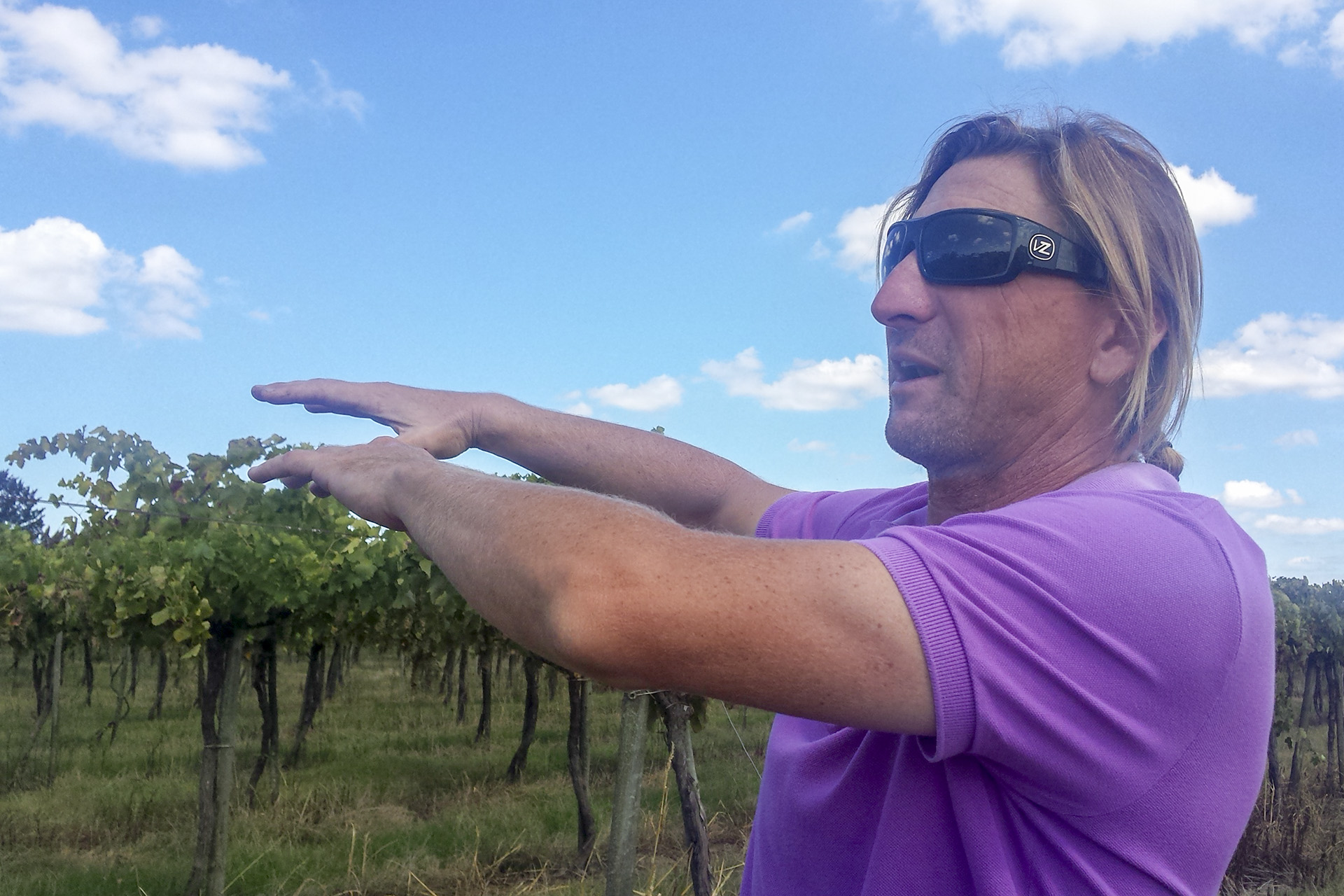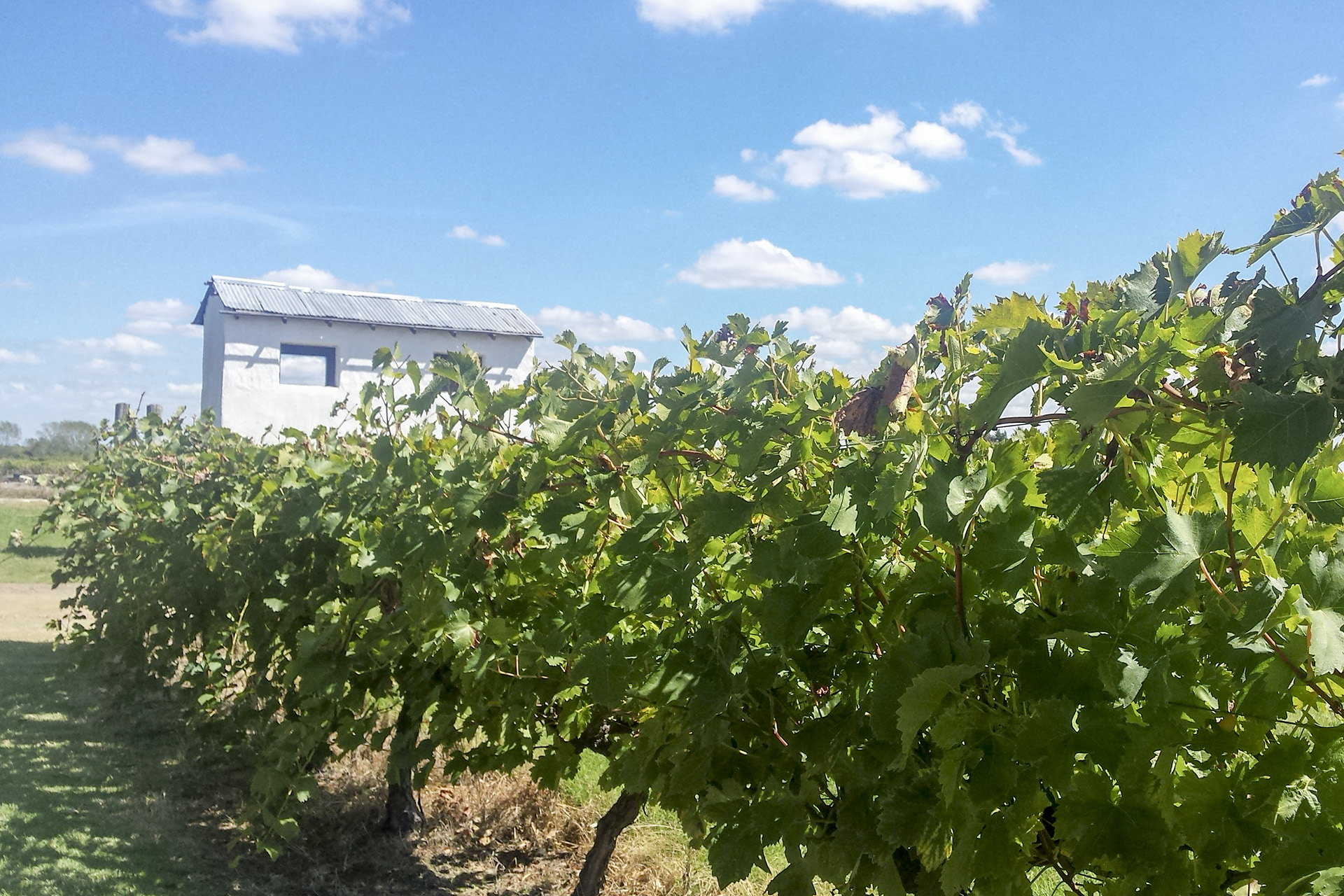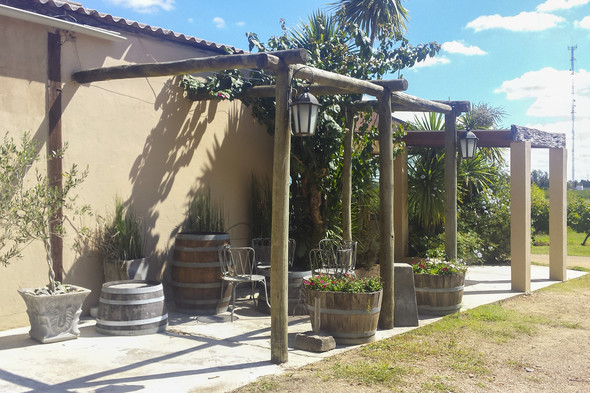The family vineyard is situated in Uruguay, just 50km from the ocean and its cooling breezes, from which it also takes its name ’Winery of the Winds’. Pablo Fallabrino has 30 hectares of land with 17 hectares of vines including Chardonnay, Moscato Bianco, Arneis, Gewürztraminer, Tannat, Cabernet Sauvignon, Ruby Cabernet, Barbera, Nebbiolo and Dolcetto; the latter he only planted this last year. Unfortunately, he said, they weren’t very good quality vines and he lost the whole plantation, but he plans to try again.
The vines are planted high in pergola to protect against frost. Although they hadn’t had serious problems with this in the past, lower pockets now do and so they are now looking for higher plantation areas. He tells us a sad story that in the 1920s, on their 50th wedding anniversary, his grandparents, recently arrived from Alessandria in Piemonte, lost everything to a massive frost. His father subsequently also planted vineyards in 1947 and in the fifties and sixties was the largest winery in Uruguay, producing ten million bottles per year. Pablo came here in 1995 following the deaths of his father and grandfather and started to work the land. In 1997, he built his own winery and began producing wine; previously he had only sold grapes. He shows us the winery building, telling us that he had bought the tanks and other equipment in 1997, only to have a huge storm destroy the roof, which took years to build up again.

For me wine is not jewellery, it’s wine
He first came across natural wines when at 19 he visited his mother in who was in Cologne for a year doing the first exports for his grandfather, and was inspired. His goal is to be intelligent organic, he says. They practise non-till farming; they just mow the grass and leave it, otherwise it is very humid, so the vines have to compete. It also encourages biodiversity. Their biggest problem is downy mildew, but they use an organic fertiliser to combat this.
Pablo’s trying to do something a bit different, to find new flavours and create something different. He wants to focus on Italian varieties from his family’s native Piemonte, rather than bring even more French cultivars. He cultivates a special clone of Nebbiolo, Michet, which he replaced ten years ago. He blends this with 10% Tannat to produce his ’Noto’. He has ten rows of Arneis, which he finds grows well here, and produces an Arneis-Chardonnay blend. He says he’s trying to put more emphasis on the Arneis this year, leaving it longer on the plant to provide more apple aromas. He also plans to blend Barbera with Tannat to lessen the tannins and give more acidity.

His rich, fresh white blend Estival is an unusual blend of Gewürztraminer, Chardonnay and Muscat. He is also trying to produce a more approachable Tannat with a quick, high-temperature ferment and no cold maceration, and to play with press wine to create different styles. He has created an entry level Tanat for those who know nothing about Tannat, separating the skins halfway through the fermentation, thus lowering the extraction, and containing no press wine. He is also the only one who has Ruby Cabernet in Uruguay; the vines are 30-years old. He shows us the passito berries he uses for his Angel’s Cuvee, Ripasso del Tannat. They are located on the first hill on the way to the ocean in order to profit from the breeze. It takes 20 days for the grapes to raisin, he tells us. He also makes a dessert wine from Tannat using Italian techniques similar to Marsala – he reduces the must with heat and then fortifies it with brandy.
Naturally, being of Italian descent, food to pair with the wine is of great importance too and his wife Marianna Cerutti prepares wonderful dishes prepared with local ingredients in the Winery Kitchen. Her spicy mussel empanadas and mushroom risotto were absolutely delicious!
Clearly Pablo’s inspiration is reaping its rewards as he exports 70% of his wine, to the US, Brazil, UK, Australia and Peru.






